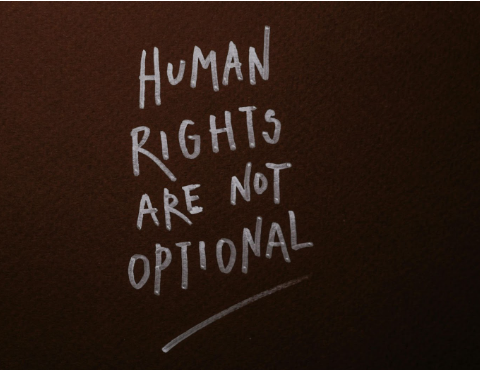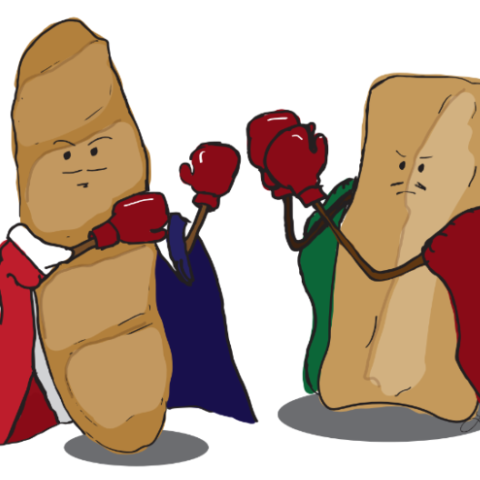By: Rachael Zipperer

As the second season of the HBO series “Girls” comes to a close, the show’s creator/writer/director/star Lena Dunham is coming out on top. With two Golden Globes and a $3 million book deal under her belt, Dunham is doing pretty well for a 26-year-old, but the polarized opinions about the show and its creator often reinforce the stereotypes that challenge whether it is feasible for other young women to achieve the same success in television and media today.
For the uninitiated, “Girls” is a comedy series (though sometimes it can be more dramatic than funny) that follows the lives of four young women all in their early 20s living in New York City. The main character, played by Lena Dunham, is a recent college graduate and struggling writer who has to fend for herself after her affluent parents tell her she is cut off financially, and the three other main characters are in similar transitional periods as they all try to find stability in their careers, relationships, and lives in general. The show focuses on the individual lives of these young women as well as the nature of their friendships with each other, and its creator prides the show on being on accurate display of this stage of life for young women today.
Since it first aired in April of last year, the show as well as Dunham herself have been met with both unrelenting criticism and overwhelming praise. Those who like the show think it’s funny, real, and unlike anything else on television and that Lena Dunham is clever and genuine. The negative reviews are rooted in controversy, with many critics recoiling at Dunham’s prolific nudity on screen. Because much of the show deals with romantic and sexual relationships, Dunham feels that by having her character appear naked on screen she is being true to the reality of such relationships.
While female sexualization is inescapable in American media, and cable stations like HBO can be more explicitly sexual than basic cable, the outrage surrounding the main character’s nudity on “Girls” has nothing to do with exploitation of female sexuality or with the broader prevalence of sex on T.V. Dunham’s pear-shaped figure is the real target of criticism. Because she does not exhibit the fit female form that
television audiences are used to seeing, many view her naked body that appears in nearly every episode as shocking. Others find the desirability of such an average-looking lady in the eyes of multiple attractive men ( Adam Driver, Patrick Wilson, etc.) to be far fetched and off-putting, especially while the more classically attractive female characters are often left unlucky in love.
In her personal life, too, Dunham catches flak for her physical appearance. She was scorned for wearing a long tunic with shorts on the red carpet at a charity event, but it was her thighs rather than the wardrobe choice itself that got the most negative attention.
While such superficial criticisms of women are so commonplace in American media today as to be expected, when women who pursue intellect, power, or creativity in any field are judged by their bodies rather than their accomplishments, it is disheartening for other women who wish to follow the same paths and a sign that there is still a great deal of progress to be made in terms of women’s success and representation in the media. Even the reviews of “Girls” that recognize the series for its innovation almost inevitably return to Lena Dunham’s body as a focus for criticism and controversy, or occasionally as a testament to groundbreaking nature of the show. Whether as a positive or negative aspect of the show, focus on the physical appearance of an actress instead of on the show’s writing or direction reinforces the idea that women should be seen as objects rather than people. Such shallow judgments send the message that TV audiences do not feel comfortable with depictions of “real” women or the unique female voices that write and direct those depictions. This message could go either way to discourage other networks from airing shows written by women about women or encourage them to produce shows like “Girls” simply for the viewership that controversy and edginess attract. In any sense, it is clear that the response to “Girls” has wider effects than merely determining the success or failure of one show and its creator.
In a Fortune Magazine interview conducted by Soledad O’Brien, O’Brien asked Dunham if she felt like a representative of all young women, if the mindset of, “If I’m successful, I’m not just successful for me, and if I’m failing I’m not just failing for me,” applied to Dunham’s decisions in how she presents herself and runs her show. The response seemed to be an overwhelming “yes” as Dunham described her conscious attempts to present herself as capable and practical in order to avoid embodying any stereotypes that would cause HBO executives to say “this is why we don’t give shows to twenty-something year old girls.”
The lack of women in powerful media positions forces the few who can gain leadership positions – such as running their own shows like Lena Dunham – to take on this representative role. In this way female show-runners like Dunham, are pivotal in setting the stage for how we view women on television and film and in leadership positions in general. Though the focus on her body demonstrates that viewers and critics are shocked by the sight of a non-uniform female physique displayed without shame in mainstream media, Dunham’s bravery in showing her character’s physical and emotional reality may be breaking new ground for female writers, directors, and actors so that eventually their presence will no longer be controversial.
Of course, there have recently been strides in achieving a greater female presence on television. With shows like “30 Rock” and “Parks and Recreation” leading the way in terms of female-centered comedy quite a while before “Girls” came on the scene, it seems that American television is well on the way to reaching the point where shows like “Girls” are no longer shocking. But even with these steps forward, stereotypes continue to overshadow women’s accomplishments. For instance, as “30 Rock” approached its final season this year, Rolling Stone ran a magazine cover that depicted the show’s creator and star, Tina Fey, as Lois Lane being saved by the male character of the show dressed as Superman. Fey had spent seven seasons building and running her own show, but in this depiction she falls behind a seemingly powerful male figure. So it seems that often times when women start to make headway, they are pushed back by issues of appearance, in this case by setting Fey in a traditionally feminine role of weakness and in Dunham’s case by comparing her body to unrealistic expectations of female attractiveness.
In the pilot episode of “Girls,” Dunham’s character, Hannah, declares to her parents, “I think I may be the voice of my generation. Or at least a voice. Of a generation.” While Lena Dunham, as a lone 26-year-old female show-runner, currently has to be the voice for her peers, perhaps in years to come more will follow in her footsteps, and the higher saturation of real women on television will eliminate the shock value of unique female voices and bodies in the spotlight.

